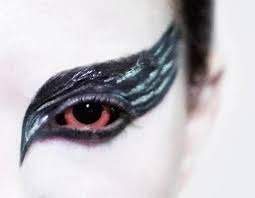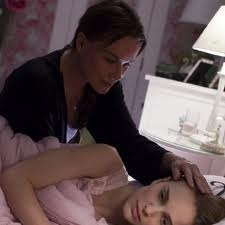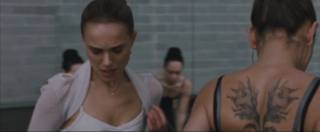Black Swan–The Trick to Inner and Outer Demons
It’s now September and we are closing in on NaNoWriMo, so I am going to be posting on some core issues that stump many a new writer. Most new writers do not properly understand the antagonist, and that is a HUGE problem, namely because no antagonist, no story. The antagonist creates the story problem the protagonist must solve/resolve by Act III.
Here’s the rub.
Whenever I blog about the antagonist, I always get, “Well, my protagonist is the antagonist. She is her own worst enemy.” We have discussed this somewhat in earlier blogs. But, in a nutshell for those of you who have slept since we talked about this, virtually all protagonists, at the beginning of the story are their own worst enemies. That is called character arc. If properly plotted, all protagonists would fail if pitted against their enemy in Act One. It is the story that makes our protagonists grow, mature and rise to become heroes and heroines.
Ah, but what if our protagonist literally is the antagonist?
This is when a proxy can be extremely helpful. Even fancy Hollywood directors know that. There will be a character who represents that side that must be conquered in order for the protagonist to be triumphant. One of the best examples of this I have ever seen is the movie Black Swan. Spoiler alert if you choose to keep reading (will try to minimize spoiling the movie if you haven’t yet seen it, but come on! The movie’s been out almost a year and a half).
Anyway…
In the movie Black Swan, the protagonist Nina is very literally at war with herself. She is a high-strung perfectionist who has clearly not been allowed to grow up like a normal young woman. Nina is cast to take the place of an older dancer who is retiring (not so willingly). Nina must embrace the light and the dark, but can this good girl unleash the darkness pent inside, yet keep her sanity?
This is the big question presented in this psychological thriller.

For those not in the know, Swan Lake is basically a tragic fairy tale. A young girl is bound by a curse to become a swan forever, and true love is the only thing that can break the spell. The cursed girl (Odette-the White Swan) finds hope in a young prince, but her evil twin sister (the Black Swan-Odile) seduces him away. Faced with defeat, Odette kills herself.
In the movie, Nina wins the role as the lead in “Swan Lake” and is perfect for the role of the delicate White Swan, Odette, but then progressively loses her mind as she becomes more like Odile, the Black Swan.
Nina does great with uptight, naïve innocence, and is perfect White Swan material. The problem is that Nina’s big life goal is to be perfect, BUT Nina needs to learn that true perfection is a mixture of order and chaos.
The Black Swan is a sexualized role. The Black Swan is a raw, visceral temptress. Nina can’t relate. She is too repressed by her overbearing mother who is living vicariously through her daughter.

Nina is her own worst enemy.
Ah, but here is where proxies come in handy, because a movie with Nina arguing with herself would be weird and probably boring (Hint: In novels this is just as annoying, if not more annoying). Aronofsky and the screenwriters came up with a brilliant solution which had me sitting on the edge of my seat all three times I watched the movie.
Their solution? Lily.
[image error]
Mila Kunis plays Lily, Nina’s rival for the role of prima ballerina. Nina, coincidentally, has a rather intricate flower tattoo (black lilies) on her back that, in the right light, looks like a set of black folded wings. Lily is everything that Nina longs to be. She is beautiful, wild, carefree, and doesn’t have some weirdo narcissist mother making her go to bed before 9.
If you guys followed my series last year about structure, then you know the antagonist (or a proxy) MUST be introduced before the turning point into Act One.
Normal World–> Inciting Incident–>Turning Point Act One
This is based off the four-part model—Normal World, Act One, Act Two, Act Three. In screenplays, Normal World usually gets condensed right into Act One. In novels the reader needs more time to get grounded; ergo a 4-part structure.
If Nina is her own worst enemy, how can we introduce her as a protagonist AND an antagonist? We can’t. We need a proxy. We need Lily.
How does the director introduce Lily, yet still hint that the core antagonist is Nina? He uses a tad of camera trickery.
Nina is taking the subway into the city. She is wearing a pale pink coat and a white fluffy scarf, her hair up in a prim ballerina bun. Out of the corner of her eye, she spies what looks like her twin, only the “other Nina” is wearing a black coat and dark gray scarf (not so subtle symbol there). Nina never sees her “twin’s” face, only sees that the girl has on iPod ear buds. In every way, though, this girl looks like the photo negative of Nina….her dark “other half.”
In the next scene, we are introduced to Lily and see she has on ear buds. This cues the viewing audience that Lily is the “twin” Nina spied on the subway. Lily is Nina’s “black swan.” Lily is the main antagonist. Lily represents everything that Nina longs to be.
Yet, is Lily the only antagonist? Not by a long-shot.
To really understand the other antagonists in this movie, we need to get to Nina’s core issue. What is Nina’s problem? She longs to grow up but she is afraid, namely because her overbearing mother does everything she can to keep her a “little girl.”
While the director Thomas is daring Nina to explore her sexuality and discover her wild side, Mom is busy buying Nina more stuffed ballerina bunnies for her pink little girl bedroom. Nina is being pulled against to polar extremes.
Repressed naïve little girl vs. wild sexual temptress.

Even though Nina is her own worst enemy, I challenge you to look at each of the scenes in this movie, and there was almost always an outside antagonist driving her arc, exposing the soft and tender parts that Nina was trying so hard to cover. She is a girl who needs to control and the thought of losing control terrifies her. But, to dance the Black Swan, that is exactly what she must do. She must be able to balance order and chaos. She must be able to keep control and lose control all in the same moment.
Can she?
Thomas is pushing her to let loose. He even says, “The only person standing in your way is you.” Mom is doing everything in her power to force Nina to stay a “little girl.”
Lily is showing Nina everything she could be…but isn’t.
The entire movie is a battle of two questions–Is Lily out to get Nina and take her part? Or, is Nina losing her mind? The core question, however, is whether Nina can be both White Swan and Black Swan without fracturing. And that part I will leave out. This is an excellent movie and well worth studying.
Suffice to say that movies have leeway that novelists do not. Nina is pitted toe-shoe to toe-shoe with her rival, Lily. This is where the camera work is very cool. Ever so often, we see Lily, but then there is a flash of Nina’s face…hinting that Nina is pitted against her own darkness that she has tried so hard to keep contained. A darkness, that, once let out of the box, has the power to destroy her.
What can we learn from this? If we can’t use the fancy camera trickery, then why bother studying this movie? Study conflict and scene antagonists.
Thomas and Mom represented the two sides warring for little Nina’s heart and mind. Lily was a brilliant proxy and made for a formidable BBT (Big Boss Troublemaker). In the Big Boss Battle, Nina had to stand up to Lily (the Black Swan) and claim that she could dance both parts. According to narrative structure rules, Nina must utterly defeat/kill the BBT, which she does.
But who dies? Lily or Nina? Watch the movie  .
.
As far as a book that explores inner demons, Dennis Lehane’s Shutter Island is one that I would highly recommend for study, and is a very similar psychological thriller. What about you guys? What books or movies would you recommend? What did you like about the movie? What didn’t you like? Are there other movies you would advise we watch for study?
I LOVE hearing from you guys! And since we have a guest today, every comment counts DOUBLE in the contest.
To prove it and show my love, for the month of September, everyone who leaves a comment I will put your name in a hat. If you comment and link back to my blog on your blog, you get your name in the hat twice. If you leave a comment, and link back to my blog, and mention my book We Are Not Alone in your blog…you get your name in the hat THREE times. What do you win? The unvarnished truth from yours truly.
I will pick a winner once a month and it will be a critique of the first 20 pages of your novel, or your query letter, or your synopsis (5 pages or less).
And also, winners have a limited time to claim the prize, because what’s happening is there are actually quite a few people who never claim the critique, so I never know if the spam folder ate it or to look for it and then people miss out. I will also give my corporate e-mail to insure we connect and I will only have a week to return the 20 page edit.
At the end of September I will pick a winner for the monthly prize. Good luck!
I also hope you pick up copies of my best-selling books We Are Not Alone–The Writer’s Guide to Social Media and Are You There, Blog? It’s Me, Writer . And both are recommended by the hottest agents and biggest authors in the biz. My methods teach you how to make building your author platform FUN. Build a platform and still have time left to write great books.






